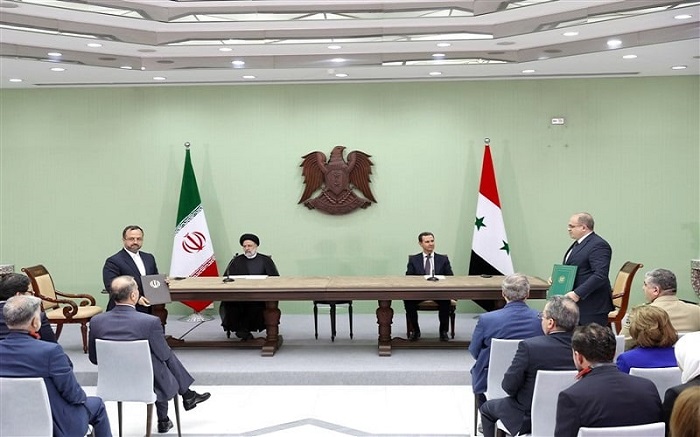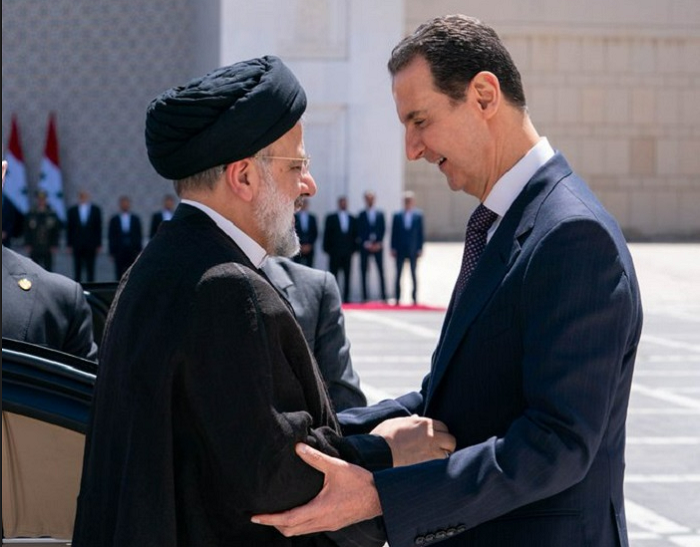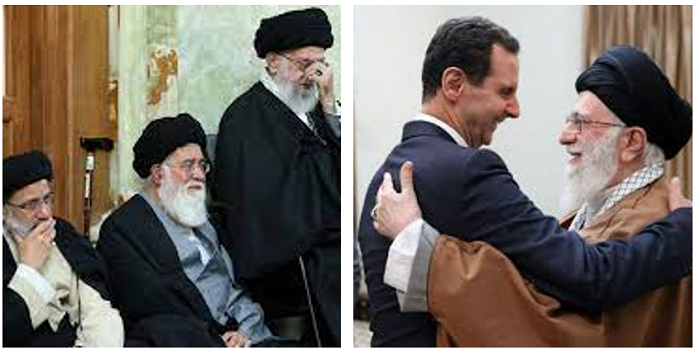
The agreements and memorandums cover various sectors, including oil, agriculture, railways, and free trade zones. This development comes as Iranian president Ebrahim Raisi visits Syria, the first trip by an Iranian head of state to the country since the civil war’s onset in 2011.
Iran’s state-owned railway company has long been interested in extending its network through Iraq and Syria to connect to the Mediterranean Sea port of Lattakia, boosting trade and expanding Iran’s political influence. The agreement also includes a memorandum of understanding to promote cooperation in the oil industry
Tehran has supported the Assad regime since the 2011 uprising, which escalated into a civil war, and played a significant role in shifting the conflict in Assad’s favor.

Iran has sent military advisers and thousands of fighters from various Middle Eastern countries to fight alongside the Assad regime’s forces in Syria, providing fuel and extending credit lines worth billions of dollars. Raisi’s visit and support for Assad highlight Tehran’s involvement in the Syrian regime’s war crimes and brutalities. Despite Iran’s population suffering the consequences of mismanagement and corruption, Tehran has spent tens of billions of dollars to maintain the Assad regime.
Supporting Assad has cost Tehran an estimated $20 billion to $30 billion. Raisi stated in an interview with pro-regime broadcaster al-Mayadeen that his visit aims to “strengthen and enhance” relations with Syria and other allies, such as Lebanese armed group Hezbollah, which also intervened in Syria to support Assad’s regime. Raisi also claimed that his visit aims to help reconstruct the country, despite Iran’s role in its destruction and the Iranian population grappling with severe poverty. Reconstruction efforts in Syria are projected to cost hundreds of billions of dollars.

Iran’s regime supports Assad due to the importance of preserving the Syrian government for its regional interests. The Iranian regime has provided military assistance, training for National Defense Forces, and dispatched tens of thousands of militants in cooperation with the Assad regime. Iran’s goals include promoting Shi’ism through religious conversion, establishing shrines, and altering demographics in Sunni-dominated areas by bringing in Shia settlers from abroad. This support is part of Iran’s broader policy to gain hegemony in the Middle East, referred to as the “Export of Revolution.”
 MEK Iran (follow us on Twitter and Facebook), Maryam Rajavi’s on her site, Twitter & Facebook, NCRI (Twitter & Facebook), and People’s Mojahedin Organization of Iran – MEK IRAN – YouTu
MEK Iran (follow us on Twitter and Facebook), Maryam Rajavi’s on her site, Twitter & Facebook, NCRI (Twitter & Facebook), and People’s Mojahedin Organization of Iran – MEK IRAN – YouTu







